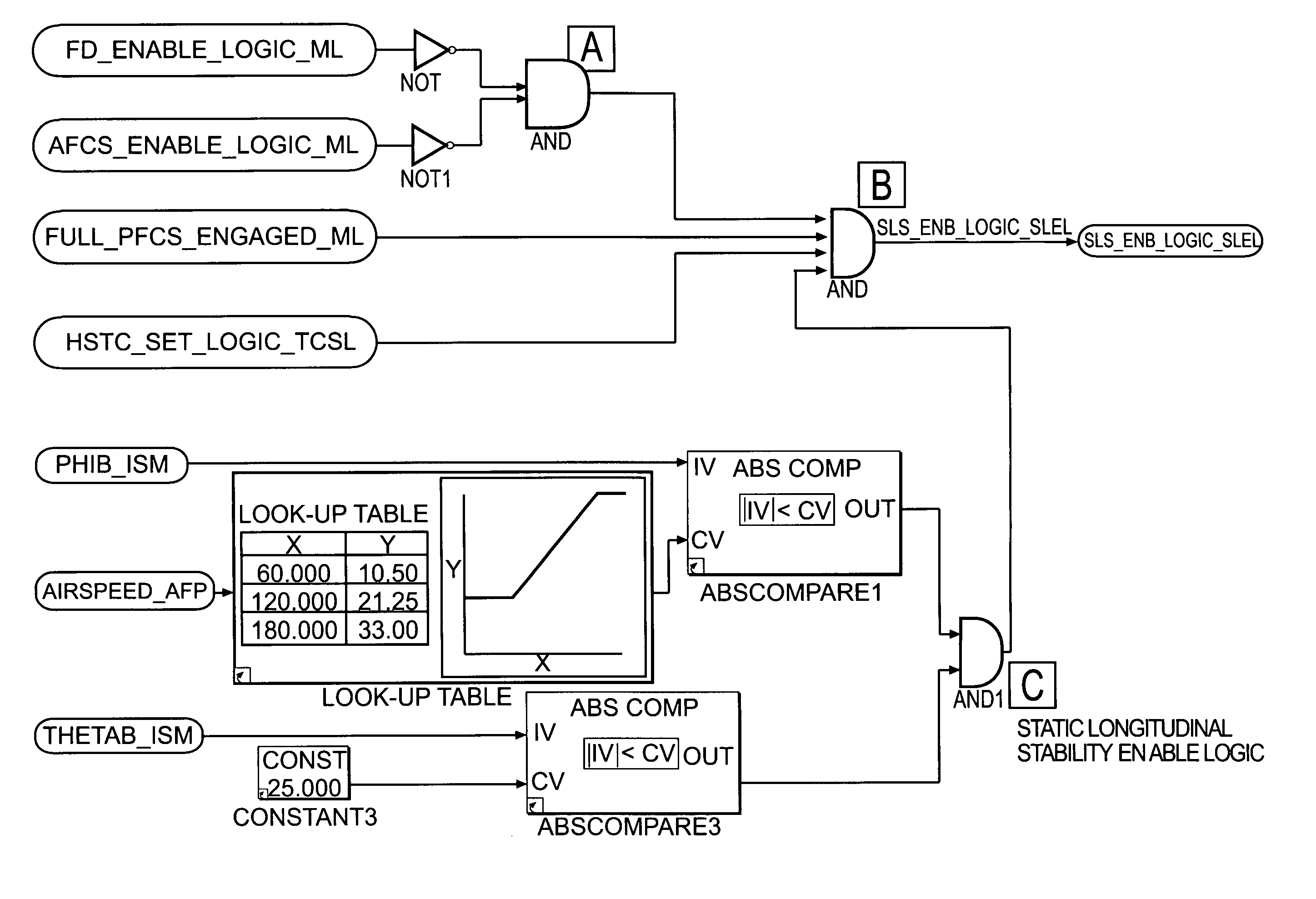Fly by wire static longitudinal stability compensator system
a compensator system and flight control technology, applied in process and machine control, instruments, navigation instruments, etc., can solve the problems of small engagement errors, unsatisfactory aircraft response, and much benign overall maneuver
- Summary
- Abstract
- Description
- Claims
- Application Information
AI Technical Summary
Benefits of technology
Problems solved by technology
Method used
Image
Examples
Embodiment Construction
[0018] The Static Longitudinal Stability (SLS) Compensation System designed according to the present invention is divided into three sections: enable logic (FIG. 1), engage logic (FIGS. 2A and 2B), and compensation shaping (FIGS. 3A and 3B).
[0019] Determining the trim condition necessary to enter airspeed hold requires monitoring aircraft states and interpreting pilot inputs. The flight regime for which this is applicable includes high-speed steady level flight (V>50 knots), coordinated turns of reasonable aggressiveness, and gentle ascents and descents. Linear accelerations, angular rates, and bank angle are used to determine aircraft trim. Additional parameters can be monitored to tailor mode engagement requirements for a given control strategy. Pilot interaction with the system also dictates mode transition. Certain pilot input will cause the mode to disengage. Pilot stick or beeper interaction automatically switches the control system to the desired Rate Command / Attitude Hold c...
PUM
 Login to View More
Login to View More Abstract
Description
Claims
Application Information
 Login to View More
Login to View More - R&D
- Intellectual Property
- Life Sciences
- Materials
- Tech Scout
- Unparalleled Data Quality
- Higher Quality Content
- 60% Fewer Hallucinations
Browse by: Latest US Patents, China's latest patents, Technical Efficacy Thesaurus, Application Domain, Technology Topic, Popular Technical Reports.
© 2025 PatSnap. All rights reserved.Legal|Privacy policy|Modern Slavery Act Transparency Statement|Sitemap|About US| Contact US: help@patsnap.com



